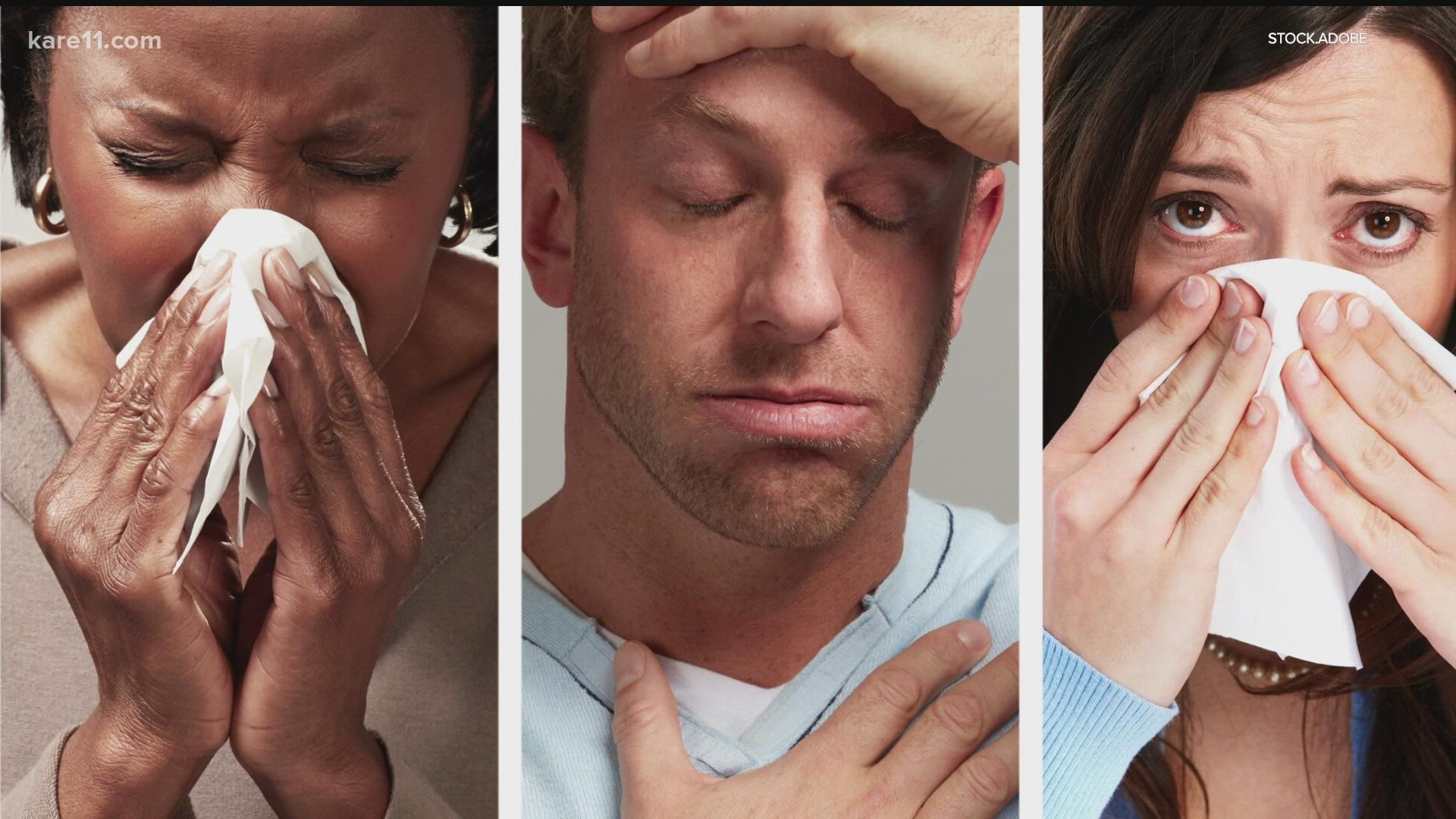SAINT PAUL, Minn. — It can be hard to ignore the downside of spring: sneezing, watery eyes, and runny nose, also known as spring sickness.
We all know about the allergens from the outside that attack us.
But did you know there are dangerous allergens, bugs, and bacteria in your home contributing to your spring allergies?
Paula Skoviera with Advantaclean says there are ways you can prevent those germs and allergens from invading your home.
You can even knock some of them out when you walk in your door.
"Taking your shoes off will really prevent bacteria from coming in, especially if you have little kids crawling on your floors," said Skoviera.
Skoviera also recommends wiping off purses and backpacks with a microfiber cloth or disinfectant wipe.
Next on the list: your bedroom.
If you think you are sleeping alone, think again.
There are millions of dust mites in your bed that carry a lot of nasty allergens.
So what can you do?
Skoviera recommends pulling back your bedsheets in the morning and letting your bed air out for 20-30 minutes.
You can also wash your bed sheets in hot water and vacuum your bed.
Another spot to watch is your bathroom.
Bacteria love to grow here because of the warmth and moisture.
"Dry off in the shower first because when you come out and put all of that moisture onto the bath mat, that is a prime spot for bacteria to grow," said Skoviera.
Letting your towel dry on a towel bar instead of a wall hook can be beneficial.
Also, consider switching out the bar soap in your bathroom for a pump soap.
What about air quality?
Your house has been closed up all winter with the same air circulating.
"Change the air filter in your furnace and get your air ducts cleaned if it's been several years. Everything circulated by your HVAC system ends up being things you breathe in your home," said Skoviera.
Another tool that can improve the air quality in your home is an air purifier.
Lastly, turn down the temp.
"Keep your home between 68 degrees and 72 degrees and keep the relative humidity in your home down around 50," said Skoviera. "You don't want it getting any higher than that. Because again, it will be a humid environment that mold and bacteria love to grow. And it will affect your breathing as well."
For more tips on how to tackle spring sickness, click here.
Watch the latest coverage from the KARE11 Sunrise in our YouTube playlist:

